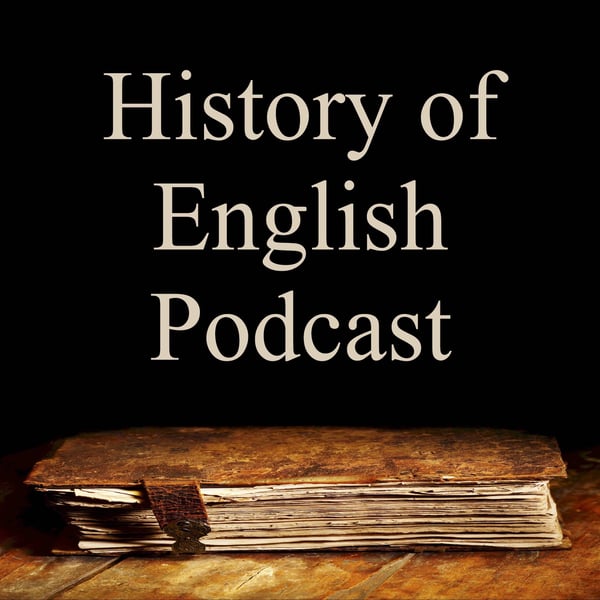Episode 88: The Long and Short of It
The History of English Podcast
Kevin Stroud
4.8 • 6.9K Ratings
🗓️ 4 January 2017
⏱️ 53 minutes
🧾️ Download transcript
Summary
Transcript
Click on a timestamp to play from that location
| 0:00.0 | Welcome to the History of English Podcast, a podcast about the history of the English language. |
| 0:15.6 | This is Episode 88, The Long and the Short of It. |
| 0:19.9 | In this episode, we're going to turn our attention to the changing vowel sounds of middle |
| 0:24.4 | English. |
| 0:25.6 | We're also going to explore the concept of long vowels versus short vowels. |
| 0:31.0 | This concept has been around since Old English, and it created problems for early scribes |
| 0:36.4 | because there was no way to distinguish those sounds with the limited letters of the alphabet. |
| 0:41.4 | But in the late 1100s, a scribe in the East Midlands came up with a way to distinguish long |
| 0:47.7 | vowels from short vowels. That scribe was Orm, the man who composed that middle English text called |
| 0:55.0 | the Ormulum. So this time, we'll see how he dealt with this problem, and we'll see how Orm's |
| 1:01.3 | reforms mirror certain spelling techniques that are still used in modern English. |
| 1:07.0 | But before we begin, let me remind you that the website for the podcast is HistoryofEnglishPodcast.com, |
| 1:14.1 | and you can sign up to support the podcast at patreon.com. Just go to HistoryofEnglishPodcast.com |
| 1:21.1 | and link from there. |
| 1:22.6 | So last time, we looked at consonant sounds in early middle English, and we examined how French |
| 1:30.1 | scribes applied the alphabet to those sounds. This time, we're going to shift our focus to the vowels. |
| 1:37.7 | Unfortunately, the story of the vowels is a bit more complicated than the consonants, |
| 1:43.2 | and that's because vowel sounds are inherently fluid and variable. |
| 1:48.5 | Unlike consonants, which tend to be pronounced in very specific parts of the mouth, |
| 1:53.5 | vowels are pronounced in the open part of the mouth cavity. The actual sounds are shaped by the |
| 1:59.5 | tongue, so that allows us to move the vowel sounds around in the mouth with relative ease. |
| 2:05.5 | We can even make them flow into each other, so I can say, A-I-O-U without ever pausing between them. |
... |
Please login to see the full transcript.
Disclaimer: The podcast and artwork embedded on this page are from Kevin Stroud, and are the property of its owner and not affiliated with or endorsed by Tapesearch.
Generated transcripts are the property of Kevin Stroud and are distributed freely under the Fair Use doctrine. Transcripts generated by Tapesearch are not guaranteed to be accurate.
Copyright © Tapesearch 2025.

